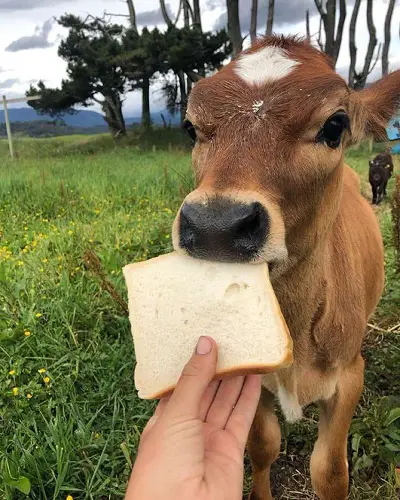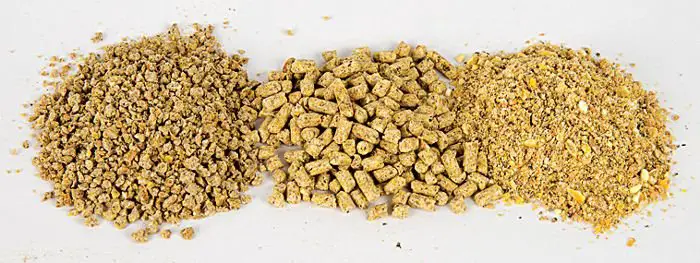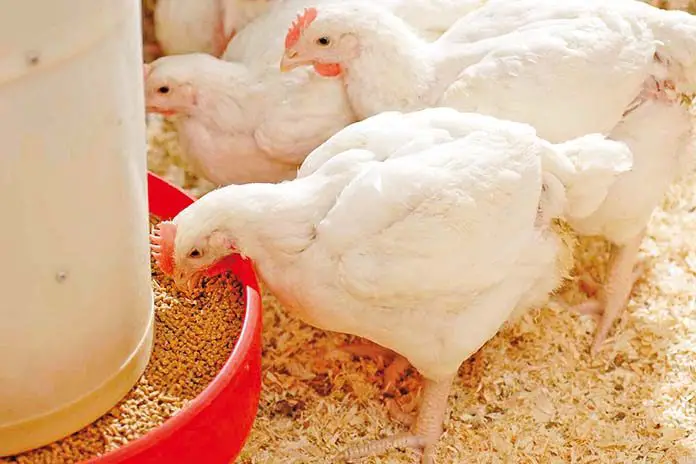There is an interesting theory, and debate on how civilization was started by human beings settling down to grow grain for bread and beer making. The debate continues but bread has been a staple for human diets apparently since the dawn of civilization. Another thing that has been with humans since civilization is the cow, used for drought power, milk, and meat. Cows can eat bread and where bread that is not fit for human consumption is available, bread can help as a substitute for expensive grains.
Contents
History of Bread
Bread is regarded as one of the oldest human-made foods in human history and has been part of human culture since the dawn of organized agriculture and civilization. The basic constituents of bread are grain, usually, wheat, and water, some versions will have yeast culture included to raise the dough. All bread is cooked by baking in ovens, this combines the amino acids and sugars in the bread through Millard reactions hardening and browning the bread also releasing the familiar bread aroma. The cooking process is also important as this improves the digestibility of the bread.
Rumen Digestion
Cows are ruminants which means the bulk of their diet is made up of grass and other forages, that provide fiber to the cow. Fiber is critical in the feeding of cows as it provides the bacteria in the cows’ rumen with a substrate to break down and produce volatile fatty acids that are absorbed by the cow. Cows then use the volatile fatty acids and other products produced by the rumen bacteria to get energy and other nutrients. The key nutrients required for the rumen to function properly and for the rumen microbes to thrive are fiber, protein, and energy. Any choice of raw material or feed aimed at feeding cows must be able to supply one or all of the above nutrients.
Typical Analysis of Bread
Because of the history of bread and its popularity across the world, there are so many variations of bread. Variations will be on the type of grain used, level of grain processing, use of yeast, cooking method, and shape of the bread. The most important considerations before feeding bread to cows are the type of grain and level of processing as these determine the nutrient content of the subsequent bread.
Bread in feeding trails with feedlot cattle has proved to be a very good alternative to grain, with a higher average energy content than maize grain. Bread has an average metabolizable energy for cattle of 14.5 megajoules per kilogram of dry matter. Most bread fed to cows is in the form of rejects from bakeries and is mostly stale and dry. The average moisture for this bread mixture is 90% with and modest crude protein of 12%. The fiber content of bread is relatively low; this is due to the processing of the grain into flour for baking which mostly removes the bran component. This does however pose a challenge when feeding cattle as the consumption has to be limited to avoid acidosis.
Benefits of Feeding Bread to Cows
Bread can be fed to all classes and breeds of cattle as it is very nutritious in terms of energy levels. Bread can be used to replace silage, grain, and other traditional energy sources in the feeding of cattle. Grains are usually very expensive and feeding bread reduces the cost of feeding especially in energy-rich cattle diets like cattle feedlot, and dairy feeds. Feeding cows bread reduces environmental waste as the stale bread, crumbs and other offcuts will not go to landfills polluting the environment.
How much Bread to Feed to Cows?
Bread is used as an energy concentrate when feeding cows, as it is low in other nutrients except for energy. Bread can be included up to 30% in cattle diets without affecting the palatability and performance of the feed, higher levels have been tried up to 55%. However, care should be taken when feeding bread especially at higher than recommended levels, as it is a very variable feed and needs to be tested for nutrient composition and mycotoxins before feeding to cows. Bread can also be used to partially substitute maize, barley, or other grains in cow feed.
Constraints of Feeding Bread to Cows
Most bread that is fed to cows is rejected by bakeries that are deemed unfit for human consumption, which makes the raw material very variable in composition. Before feeding bread to cows it’s important to have it analyzed for nutritional composition. Stale bread available for cattle feeding can have molds and subsequently mycotoxins, which can cause mycotoxin contamination of milk in dairy cows. There have been reported cases of botulism in cows fed bread and bread wastes due to bacterial contamination of the bread by Clostridium bacteria. Bread should be fed to cows in conjunction with a balanced fiber-rich diet as bread is very low in fiber, to avoid acidosis. A careful analysis of the salt content of the bread also needs to be done as excesses can occur when combined with other ingredients.
Can Cows Eat Rice?
Rice is a carbohydrate-rich grain that is a staple in many tropical regions across the world, unprocessed rice is high in fiber which makes it a useful feed for cows. Cows can eat processed and unprocessed rice as mostly an energy source. Rice straw which is left over after rice harvesting can also be fed to cows to provide fiber.
Conclusion
Cows can eat bread and other bakery wastes as a valuable energy substitute for expensive grains. Bread is rich in energy and poor in fiber and protein content, hence it can be incorporated with other ingredients to make a balanced cow feed. Bread can be safely included up to 30% in cow feed although higher inclusions have been tried out for feedlot cattle, it’s crucial to test the bread for nutrient composition and mycotoxin contamination to avoid any nutrient deficiencies and metabolic issues. Bread can be useful, environmentally friendly, and profitable feed ingredient for cows and where available can and should be included in cattle feed.




